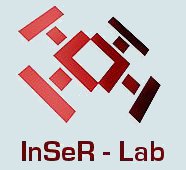The Laboratory hosts collaborative research that contributes to social collaboration theory development for the Architecture, Engineering, Construction, and Facility Management (AEC/FM) domains.
![]()
Mission
The mission of InSeR‐Lab is to bring construction project participants together through the use of innovative information technologies. We want to make sure that construction actors correctly communicate the required information with its intended meaning. Accurate communication resutls in more informed decisions regarding all aspects of designs and construction processes including the use of materials and natural resources during the project life cycle. We recognize that communication amongst actors is irrespective of the fact that they may belong to different organizations, have different backgrounds, or be located in different parts of the globe.
Vision
Our mission is to host an academic research center that provides a stimulating scientific environment for Architecture, Engineering, Construction, and Facility Management researchers who strive towards advancements in:
- Collaboration: by enabling changes through effective interface through virtual environment during the design, construction, and operation of projects.
- Globalization: by extending the awareness, effective communication, and opportunities to geographically global stakeholders, including potential providers.
Objectives
- Enable project actors and communities of practice to seamlessly integrate cyber resources in their work practices through a common technological framework.
- Appropriate, adopt, and deploy social network technology to enable an effective interfacing of connected groups of actors and members of the community to more intelligently reach solutions, solve problems, and reach consensus.
- Enhance awareness of civil and construction project information through better connected teams and savvy users to increase productivity and reduce the use of natural resources for enhancing sustainability practices.
Examples of Anticipated Benefits:
Engagement of collaborative work for writing research grants, disseminating research, and promoting scientific initiatives on semantic resources through doctoral and thesis works.
InSeR‐Lab will benefit fields that heavily rely on improved collaboration, such as innovation in sustainable materials and alternative forms of energy.


